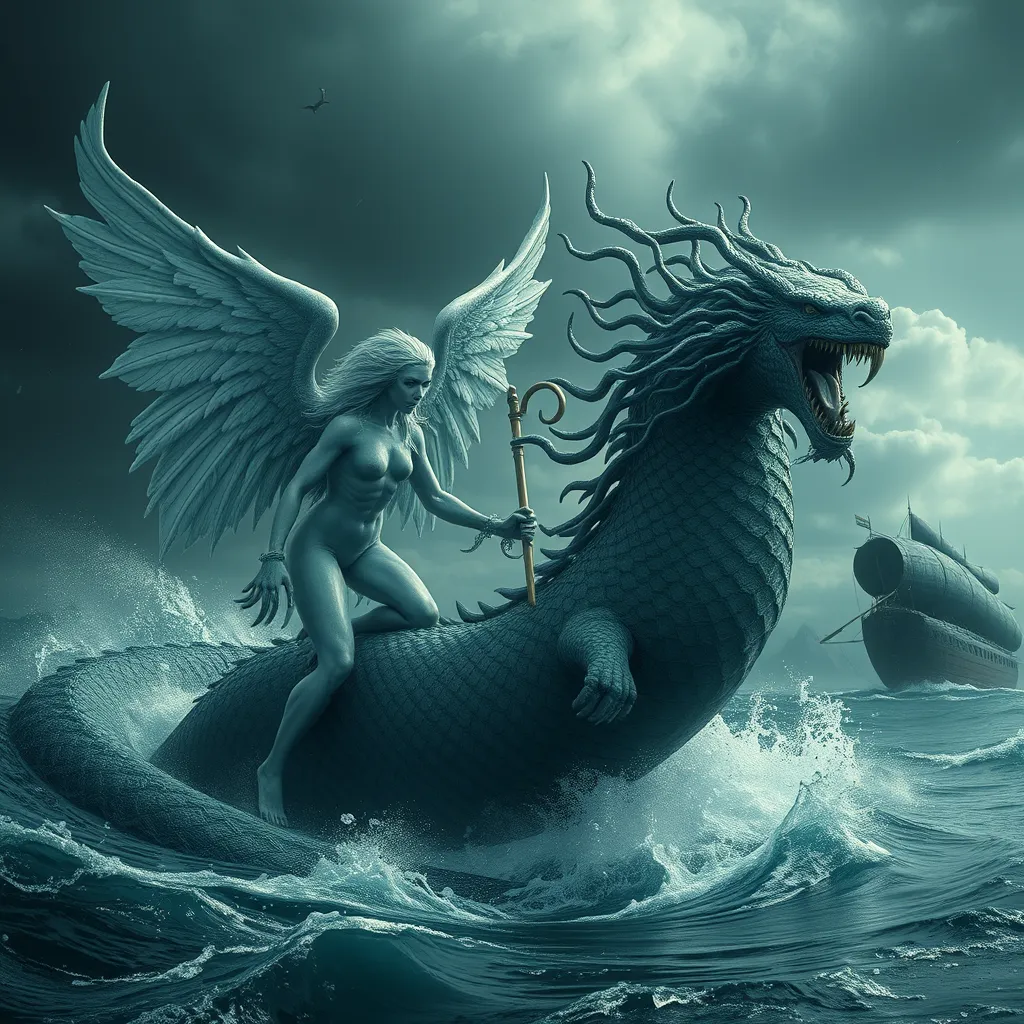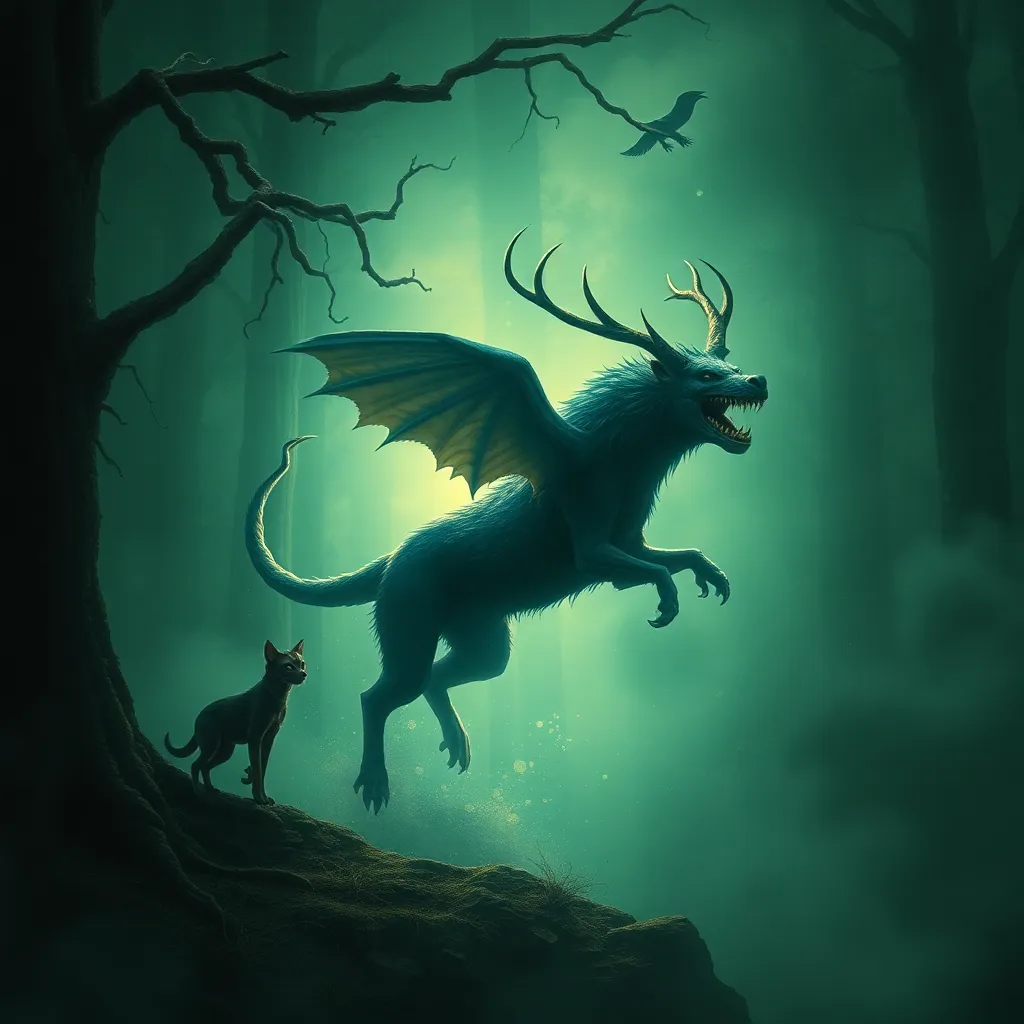From Valkyries to Sea Serpents: Exploring the Diverse Manifestations of Norse Sirens
I. Introduction
Norse mythology is rich with a variety of fascinating entities, among which the concept of sirens stands out. Within this mythology, sirens are not merely the alluring beings of ancient sea tales, but encompass a broader spectrum of figures, including warrior maidens and fearsome sea creatures. They serve as symbols of both beauty and peril, embodying the complex relationship between humanity and the natural world.
This article aims to delve into the diverse manifestations of sirens in Norse lore, exploring their origins, characteristics, and cultural significance. By understanding these figures, we can gain insights into the values and beliefs of the Norse people, as well as their views on life, death, and the mysteries of the sea.
II. The Mythological Origins of Norse Sirens
The origins of sirens in Norse mythology can be traced back to the rich tapestry of ancient Norse beliefs. The Norse pantheon is populated with a variety of gods, goddesses, and mythical creatures, each with specific roles and characteristics.
Sirens, in this context, often embody the dual aspects of attraction and danger. They resonate with the broader themes found in global folklore, where beings that entice or lure humans often come with a hidden peril. The interconnectedness of these stories reflects a universal human experience with nature and the unknown.
III. Valkyries: The Warrior Maidens
One of the most prominent representations of sirens in Norse mythology is the Valkyries. These warrior maidens, often depicted as beautiful and fierce, serve Odin, the chief god. Their primary role is to choose those who may die and those who may live in battles.
- Description and Characteristics: Valkyries are frequently portrayed as noble and powerful figures, adorned with armor and often riding winged horses.
- Guides for Fallen Warriors: After a battle, Valkyries guide the souls of slain warriors to Valhalla, Odin’s hall, where they prepare for Ragnarök, the end of the world.
- Duality of Beauty and Death: The allure of the Valkyries represents both a call to battle and the inevitability of death, making them complex symbols of fate and glory.
IV. Sea Serpents: Guardians of the Waters
In addition to Valkyries, Norse mythology features sea serpents, which are often seen as guardians of the waters. These creatures embody the dangers that lurk beneath the surface and the mysteries of the ocean.
- Overview of Sea Serpents: Creatures like Jörmungandr, the Midgard Serpent, are central figures in Norse tales. Jörmungandr encircles the earth, symbolizing the boundary between the known and unknown.
- Famous Tales: The story of Thor’s battle with Jörmungandr during Ragnarök is one of the most notable, illustrating the theme of confrontation between gods and formidable creatures.
- Symbolism of the Sea: The sea in Norse culture symbolizes not only physical danger but also the emotional and spiritual challenges that individuals face.
V. The Role of Sirens in Norse Literature
Sirens play a significant role in various texts and sagas of Norse literature. Their appearances often serve to advance the plot or convey deeper meanings.
- Key Texts and Sagas: Works like the “Poetic Edda” and the “Prose Edda” contain references to sirens or siren-like figures, reflecting their importance in Norse storytelling.
- Narrative Function: Sirens often act as catalysts for characters’ actions, representing temptation, danger, or the lure of the unknown.
- Metaphors for Temptation: The depiction of sirens serves as a metaphor for the seductive nature of danger, reminding characters and readers alike of the perils of desire.
VI. Modern Interpretations and Adaptations
The imagery and themes surrounding Norse sirens have transcended ancient texts, finding their way into contemporary literature and media.
- Influence in Contemporary Literature: Modern novels often reinterpret Valkyries and sea serpents, exploring their attributes in new contexts.
- Representation in Films and Video Games: Films and video games frequently draw upon Norse mythology, depicting Valkyries as powerful female figures and sea serpents as monstrous adversaries.
- Evolution of Siren Imagery: The portrayal of sirens has evolved, reflecting contemporary values and themes, such as empowerment and the complexities of nature.
VII. Comparative Analysis with Sirens in Other Mythologies
When examining sirens in Norse mythology, it is insightful to compare them with similar figures in other cultures.
- Similarities with Greek Sirens: Both Norse and Greek sirens share characteristics of allure and danger, often leading men to their doom.
- Exploration in Other Cultures: Sirens also appear in Celtic and Slavic folklore, embodying similar themes of seduction and peril.
- Universal Themes: Across mythologies, sirens symbolize the complex interplay between attraction and danger, a reflection of human experience.
VIII. Conclusion
In conclusion, the diverse manifestations of sirens in Norse mythology, from the valiant Valkyries to the fearsome sea serpents, reveal a rich tapestry of cultural significance. These figures embody the complexities of beauty, danger, and the human condition.
The enduring legacy of Norse sirens in modern storytelling highlights their relevance in contemporary culture, reminding us of the timeless themes of temptation, fate, and the mysteries of existence. Understanding these mythological figures is crucial for appreciating the depth of Norse mythology and its influence on our narratives today.



